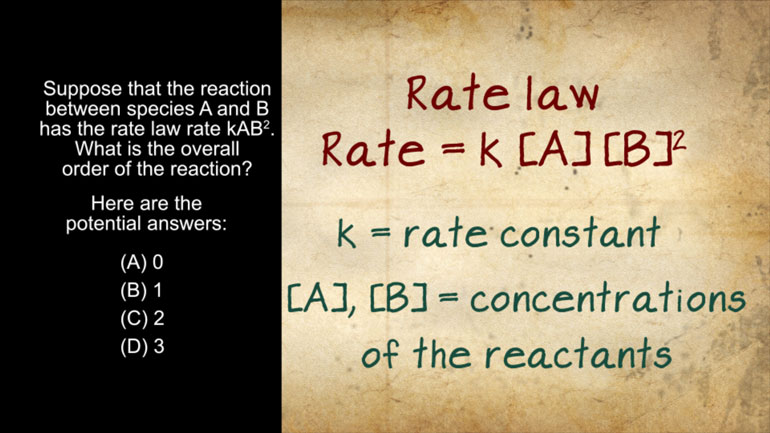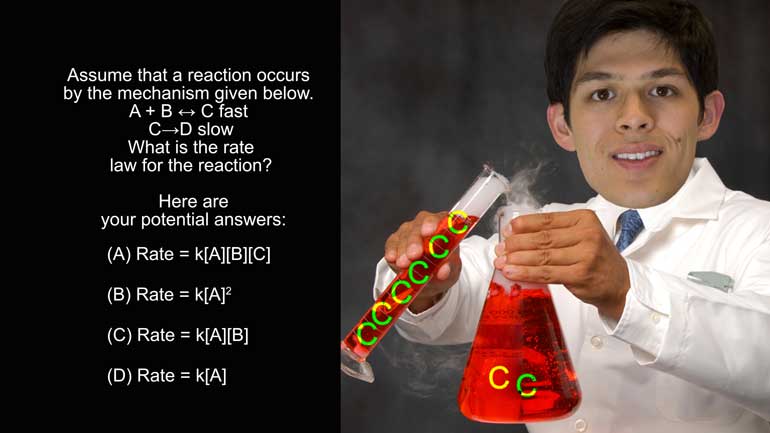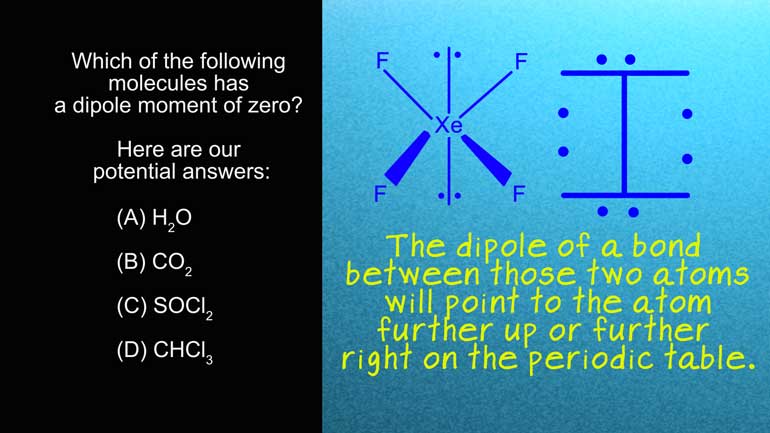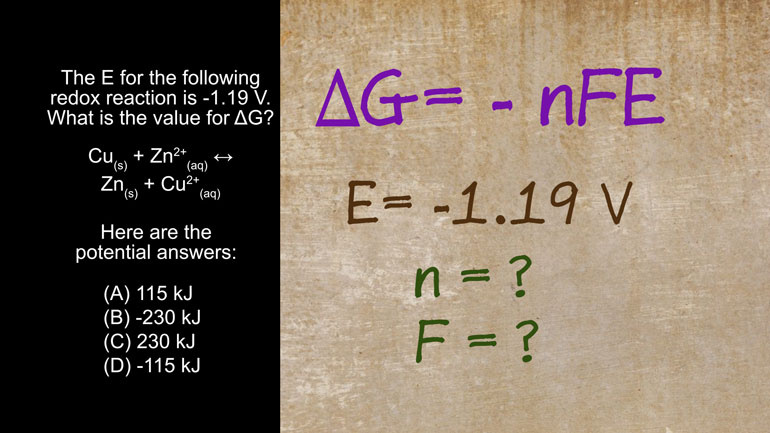ShmoopTube
Where Monty Python meets your 10th grade teacher.
Search Thousands of Shmoop Videos
AP Chemistry 1.1 Laws of Thermodynamics 233 Views
Share It!
Description:
AP® Chemistry: Laws of Thermodynamics Drill 1, Problem 1. Which equation represents the heat of formation for Calcium Chloride?
Transcript
- 00:03
Here's your shmoop du jour, brought to you by Calcium Chloride. Roads need it to grow
- 00:08
up big and strong. Or... to keep from getting icy, or whatever.
- 00:13
Which equation represents the heat of formation for Calcium Chloride?
- 00:18
And here are your potential answers...
- 00:26
Even if we have no idea about what the heat of formation is... let's think about it. FORMATION.
Full Transcript
- 00:32
We probably want the compound calcium chloride to be on the RIGHT side of the equation...
- 00:36
since that's what's being FORMED. Which means we can immediately eliminate C.
- 00:44
So now to learn what a heat of formation equation...is.
- 00:49
A heat of formation equation shows the elements that make up the compound to be formed, in
- 00:53
their standard state. It's important that they're in their standard
- 00:57
state...which is basically whether they're solid, liquid, or gas at room temperature.
- 01:02
Calcium is a solid at room temperature, and chlorine is a gas at room temperature...
- 01:06
but a diatomic molecule...
- 01:13
Meaning that it looks like Cl 2, not 2 Cl.
- 01:17
These two molecules are in their standard states in option (D).
- 01:21
D's our answer. We haven't had so much fun with formation
- 01:24
since we got that lifetime supply of Play-doh...
Up Next
AP Chemistry 1.3 Chemical Reaction Rates. What is the overall order of the reaction?
Related Videos
AP Chemistry 1.4 Chemical Reaction Rates. What are the correct units for a second order rate constant?
AP Chemistry 1.5 Chemical Reaction Rates. What is the rate law for the reaction?
AP Chemistry 3.2 Laws of Thermodynamics. What is the value for ΔG?




